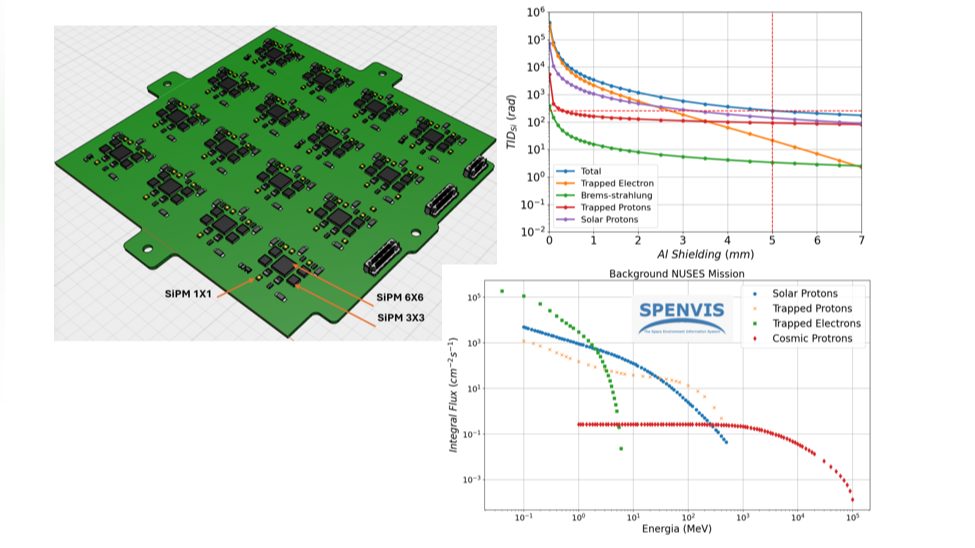NUSES (Neutrino and Seismic Electromagnetic Signals) is an innovative space mission proposed and
coordinated by the Gran Sasso Science Institute (GSSI). It comprises two key scientific instruments,
known as ZIRE’ and TERZINA. ZIRE’ is designed to measure the energy spectra of charged particles up to
about 300 MeV to study low-energy cosmic rays, monitor the Van Allen belts and space weather
phenomena, and analyze magnetosphere-ionosphere-lithosphere coupling (MILC) systems. TERZINA is a
telescope dedicated to testing new observational techniques to study ultra-high energy cosmic rays
(UHECR) and neutrino astronomy detecting atmospheric Cherenkov light in space. To fulfill the mission
objectives, ZIRE' relies on a detection system consisting of four primary sub-detectors while TERZINA is
based on a focal-plane assembly, both characterized by the use of silicon photomultipliers (SiPM) to
read the scintillation light released by particle interactions in the target. The research focuses on
optimizing the design of these payloads through specific simulations to estimate the expected radiation
environment in orbit and conducting tests, such as: Total Ionizing Dose, Total Non-Ionizing Dose, Single
Event Effects for the characterization and qualification of the sensors, and COTS readout electronics through radiation campaigns (Co-60 for TID, Neutrons for TNID, protons/high nuclei for SEE). The
mission will use several SiPMs for a total surface of 11420mm^2, and this study will be pioneering in using such sensors in space missions due to their high performance and low cost. Crucial is studying the correlation between radiation damages and the impact on the sensors' performance, examining the mission's power budget and the effects of increased dark current. Finally, the study of X-ray tomography and the use of the optical microscopy will help correlate electrical performance with structural damage by analyzing the lesser known phenomenon of silica Amorphization.

